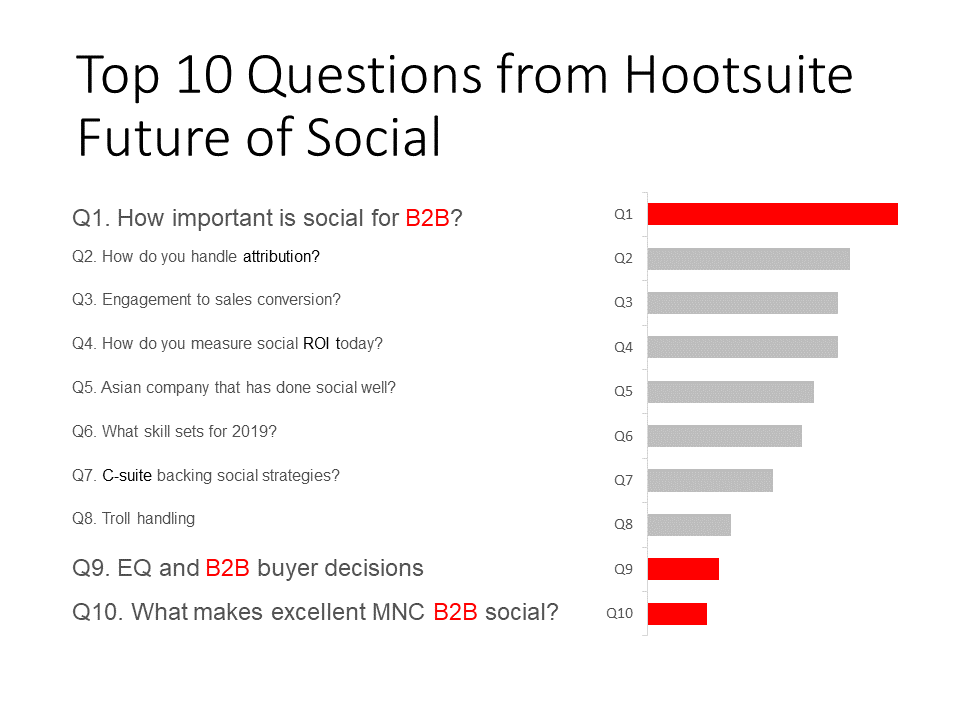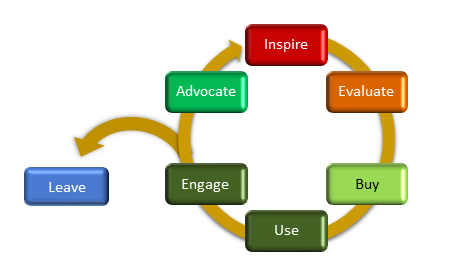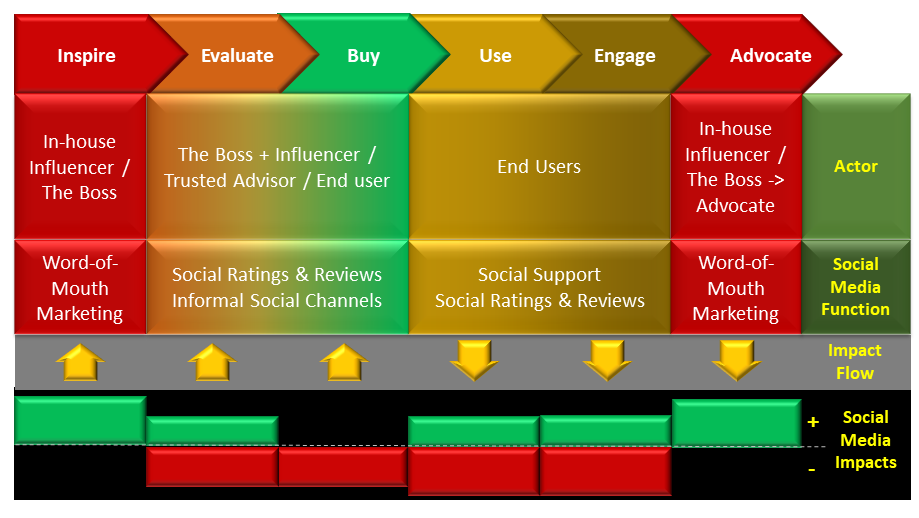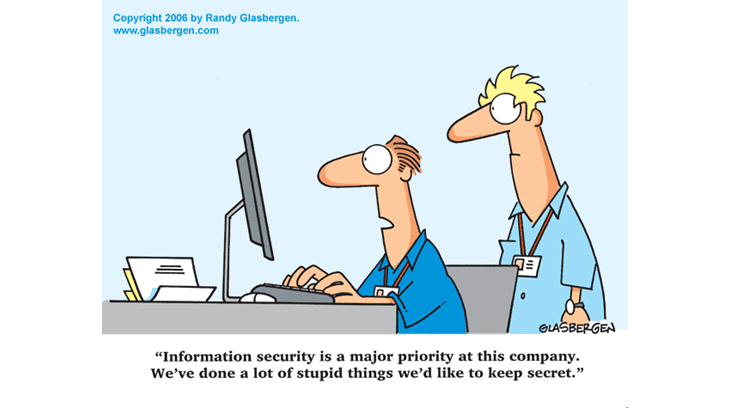I recently attended Hootsuite’s Future of Social event. The 10 most popular questions are listed in Fig 1. Three of them deal with B2B business. There were another 6 B2B-related questions distributed among the full list raised to the speaker panel.

Fig 1 Top 10 Social Media Questions
What differentiates SME and Large Enterprises in B2B?
With the Singapore and regional governments focussing their efforts in promoting B2B, especially Small and Medium Enterprises (SMEs), it is small wonder that marketing and PR agencies are looking into this sector as well. Also, the consumer market is quite saturated with Social Media marketing and the government sector has not opened up that quickly.
So how different is the B2B market from B2C (Business to Consumer)? Firstly, the B2B market is not monolithic. We need to further segment that into Small, Medium, Large Enterprises; and Multinational Corporations (MNCs) of various sizes. So we need to create a “persona” for each enterprise type.
Different countries have different ways of classifying their definitions of S/M/L enterprises. Some have based the classification on a combination of turnover, revenues, number of employees, annual profit. Some even on the area of land owned. As an example, Singapore has classified enterprises that have more than 30 per cent local ownership and with group of less than SGD 100 million or with less than 200 employees.
These classifications are designed by governments for policy engagements. It is not necessarily a description of the complex activities processes that an enterprise engages in. A common misconception is that companies that are small do not have good processes. For example, though few, there are SMEs that are ISO 9000 certified. This is especially true in industries such as defense, telecoms and government where their procurement processes stretch into their vendors too.
The Customer Decision Journey (CDJ)
No matter how an organisation is classified, as Marketers, we need to understand the customer decision journey (CDJ) between these organisation types. The enterprise size will, in general, determine the type and amount of resources available to design, implement and enforce the decision-making processes. But always be aware of the above exception. The resources and age of the enterprise will also determine the maturity of procurement and support processes. Fig 2 shows the new circular CDJ which forms a virtuous circle as we will describe later.

Fig 2. Circular Customer Decision Journey
The whole decision process in a small enterprise is short and less structured compared with a large enterprise. The small and micro enterprise’s CDJ is similar to a consumer’s. An employee is inspired via social media or other channels. The idea is floated to the boss or a director and a decision is made. Sometimes, one of the employees may be delegated to look into the purchase. This person may recommend or buy based on personal experience or word-of-mouth or research. For the latter 2 cases, social media can play an important part in decision making.

Fig 3 Steps in the Decision Journey for Small Enterprises
If the user/buyer is happy with the purchase, he/she can be converted to be an advocate for your brand. The chart below shows the same CDJ stretched out horizontally with the actors in each stage. This process is shown in Fig 3.
Engaging the Small and Micro Enterprises in their Social Journey
In my dealings with SMEs for IT, most of the Small Enterprises may not have full-time IT managers. The informal IT guy typically has other chores in the company. Or in some cases, the IT may be outsourced to another company. To save time, the SME part-time IT manager may refer to GetApp or TrustRadius for software reviews by users or simply ask questions on IT forums like Hardwarezone or Lowyat.net. I have seen questions for product opinions coming up in Quora and Reddit.
While there is not much that a brand can do on 3rd party review sites, it pays to listen to such sites to understand complaints and sentiments and, where possible, address them. Just as positive comments from current users of your products can influence other customers and prospects, negative comments can be devastating and costs the company much to restore trust in your brand and products.

Fig 4. Customer Actors and Roles of Social Media for SME customers
In Figure 4, the top row of the chart shows the stages in the decision and use journey. Ideally, we eventually want to convert the customer to be a brand advocate so that they can help bring in more customers.
The next row shows the actors in each stage of the decision journey. We can see that there are few decision makers and opinion influencers overall for SMEs. One actor can cover several stages of the CDJ.
The next row shows the function of social media that will be effective in each stage.
Fourthly, we have the impact flow, whether that is in or out. It means that the organisation and its decision makers are affected by external social media sentiments and facts of the brand. Outflow means the information and sentiments put forth by the actors will impact other customers or prospects of your brand.
Right at the bottom, we have the most important row: Impact that social media has at each stage. RED indicates negative impacts and GREEN positive ones. As is usual in social, good news has less impact than bad ones.
Beyond the BUY, and into Support, Engagement and Advocacy
The journey does not end with a BUY. Social media is used for more than marketing and sales. It can also be used for support, post sales engagement and brand advocacy. Customers now turn to social media like Facebook, Twitter, WhatsApp and Instagram to complain and ask for help. Customers who receive good service will reflect in the same channels.
We can see that once we understand the decision journey and decision makers, we can plan how and what type of social media can influence the decisions positively and negatively. We can then next plan social media campaigns and activities.
Next week, we shall discuss the Large Enterprise B2B Journey and the Social Media Type to use with the right content.






Leave A Comment